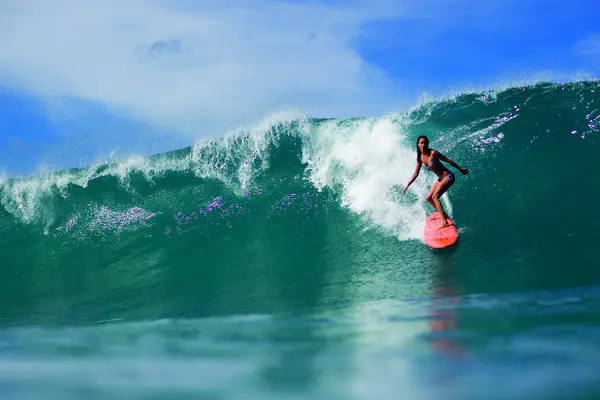Surfing is an exhilarating sport. It combines athleticism and harmony with nature. Competitive surfing requires skill, precision, and a deep understanding of the ocean. But how is surfing judged? The process might seem subjective, but it’s structured with clear criteria and standards.
History of Surfing Competitions
Surfing has ancient roots. Polynesian cultures practiced surfing for centuries. In the 20th century, surfing became a competitive sport. The first major competition was held in the 1920s. Over the years, governing bodies like the World Surf League (WSL) standardized the judging process.
Judging Criteria
Commitment and Degree of Difficulty
Commitment refers to the surfer’s willingness to take risks. Bigger waves and critical sections of the wave demand more commitment. The degree of difficulty looks at how challenging the maneuvers are. Judges reward surfers who take on difficult waves and perform challenging moves.
Innovative and Progressive Maneuvers
Surfing evolves constantly. Judges look for new and creative maneuvers. Progressive moves push the boundaries of what’s possible on a wave. Surfers who innovate are rewarded. These maneuvers set trends and advance the sport.
Combination of Major Maneuvers
Combining major maneuvers showcases skill and control. Judges look for seamless transitions between moves. A surfer who links multiple maneuvers fluidly scores higher. This demonstrates mastery over the wave and board.
Variety of Maneuvers
Variety is crucial in scoring. Repeating the same move can limit scores. Judges want to see a diverse range of maneuvers. This includes carves, snaps, airs, and barrel rides. A varied performance indicates a well-rounded surfer.
Speed, Power, and Flow
These three elements are vital. Speed ensures dynamic and energetic surfing. Power shows control and strength in maneuvers. Flow is the smooth transition from one move to another. Judges look for a balance of all three in each ride.
Judging Panel and Process
A panel of five judges scores each ride. They use a 10-point scale. The highest and lowest scores are discarded. The remaining three are averaged. This ensures fairness and consistency. Judges watch each wave closely. They consider the criteria and score within seconds.
See Also: What Is a Kook in Surfing Terms
Types of Surf Competitions
Shortboard Competitions
These are the most common. Shortboards are versatile and perform well in various conditions. They allow for sharp turns and aerial maneuvers. Competitors demonstrate technical skills and creativity.
Longboard Competitions
Longboards require a different style. They are longer and heavier. The focus is on grace and traditional maneuvers. Nose riding and cross-stepping are key elements. The judging criteria are slightly adjusted for these events.
Big Wave Competitions
These are held in extreme conditions. Waves can reach 60 feet or more. Commitment and courage are paramount. Judges prioritize successful rides and safe exits. Maneuvers are less frequent due to the wave size and power.
Wave Pools
Artificial wave pools offer controlled conditions. Every wave is identical. This levels the playing field. Judges can focus solely on the surfer’s performance. Wave pools are becoming popular for competitions and training.
Scoring Breakdown
Each wave is scored on a 10-point scale. Here’s a detailed breakdown:
- 0.0-1.9: Poor: Basic ride with no maneuvers. The surfer may not complete the wave.
- 2.0-3.9: Fair: Minimal maneuvers and low difficulty. The ride lacks impact.
- 4.0-5.9: Average: Standard maneuvers with some difficulty. The ride is competent but not outstanding.
- 6.0-7.9: Good: Multiple maneuvers with moderate difficulty. The ride shows skill and control.
- 8.0-10: Excellent: High difficulty and commitment. Innovative and varied maneuvers. The ride is exceptional and memorable.
Factors Affecting Judging
- Wave Selection: Choosing the right wave is crucial. Judges note how well surfers read the ocean. A good wave provides more scoring opportunities. Poor wave selection can limit potential scores.
- Wave Conditions: Conditions vary greatly. Judges consider the difficulty presented by the conditions. Wind, tide, and swell direction all play a role. Surfers must adapt to changing conditions.
- Competitor Strategy: Strategies differ. Some surfers take many waves, hoping for consistency. Others wait for the perfect wave, aiming for a high score. Judges understand these tactics and score accordingly.
Challenges in Judging
Judging surfing is complex. The subjective nature of the sport poses challenges. Judges must remain unbiased and consistent. Video replays and scoring systems help maintain accuracy. The judging panel often reviews close calls together.
Technology in Judging
Advancements in technology aid judging. High-definition cameras and drones provide better views. Instant replays help verify scores. Digital scoring systems streamline the process. These tools enhance fairness and transparency.
Controversies and Criticisms
Judging surfing isn’t without controversy. Disputed scores and perceived biases can arise. Transparency and clear criteria help mitigate issues. Ongoing training and review for judges ensure high standards.
Notable Competitions and Moments
Several events stand out in surfing history:
- The Eddie Aikau Invitational: Held at Waimea Bay, Hawaii. It honors the legendary lifeguard and surfer Eddie Aikau. Only runs in massive waves.
- Pipeline Masters: Part of the Triple Crown of Surfing. Held at the Banzai Pipeline, Hawaii. Known for its dangerous and perfect barrels.
- Teahupo’o: In Tahiti, it’s famous for its heavy and hollow waves. Known as one of the most challenging waves in the world.
- Mick Fanning’s Shark Encounter: During the 2015 J-Bay Open. A shark attacked Fanning during the final. He escaped unharmed, showing remarkable composure.
Training for Competitions
Top surfers train rigorously. Physical conditioning is vital. Strength, flexibility, and endurance are key. Mental preparation is equally important. Surfers often work with coaches and sports psychologists.
Conclusion
Surfing is a dynamic and evolving sport. Judging it requires a blend of objective criteria and subjective insight. Judges look for commitment, innovation, and style. Technology and transparent processes enhance fairness. Despite challenges, the thrill and artistry of surfing continue to captivate audiences worldwide.

